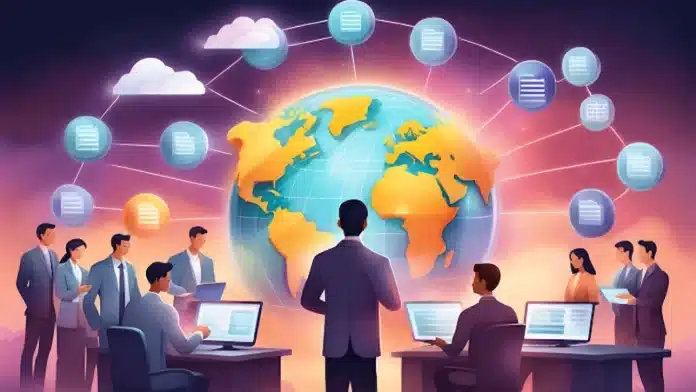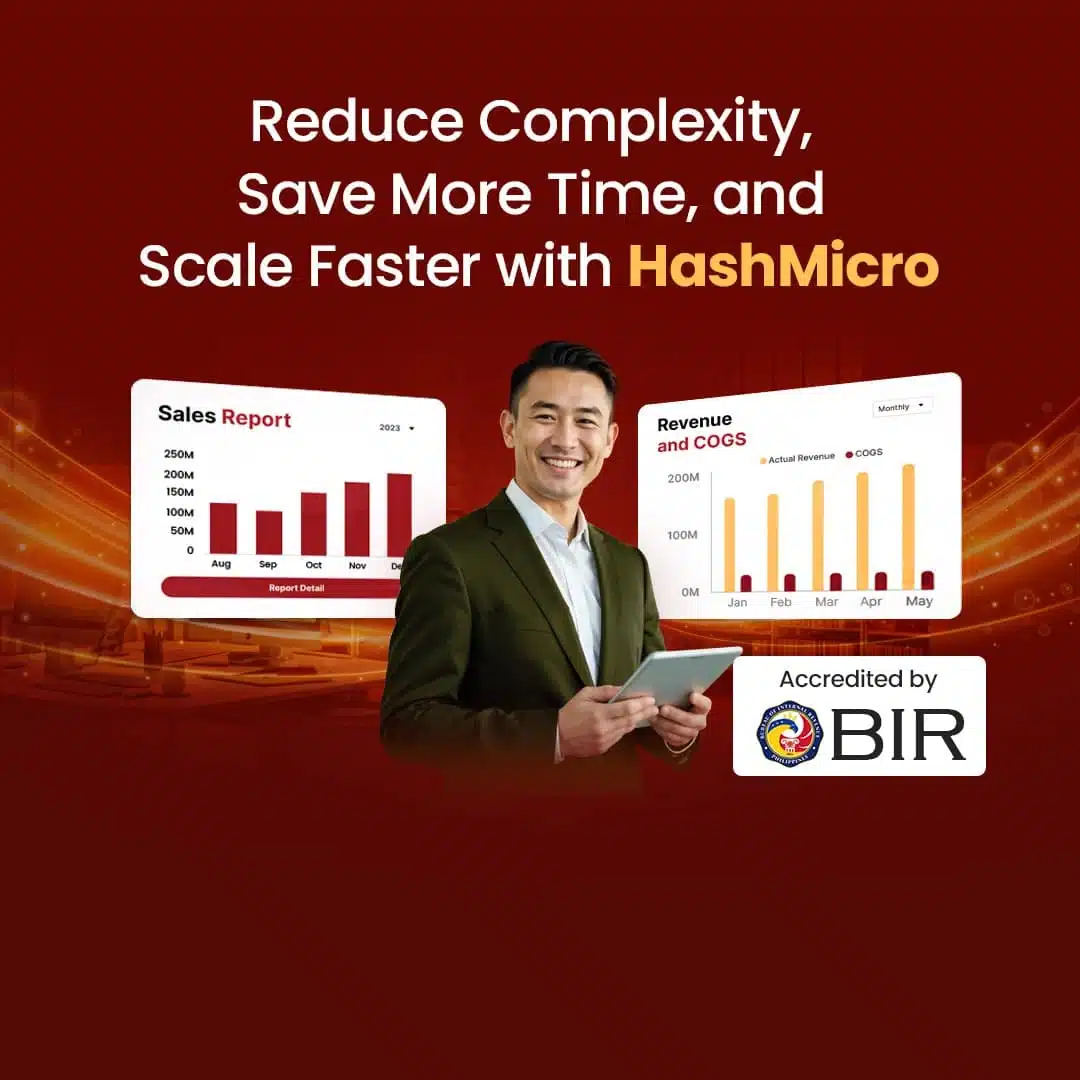How can these solutions oversee an organization’s daily operations? Enterprise resource planning systems are comprehensive, unified platforms, available either on-site or in the cloud, that handle every aspect of a production or distribution business. By centralizing these operations, ERP helps businesses simplify workflows, improve productivity, and reduce errors.
The Philippines is leading the ERP market in the Asia-Pacific, with an expected annual growth rate of 7.53% by 2028. GlobeNewsWire predicts the global ERP systems market will hit USD 137.7 billion by 2032.
More businesses in the Philippines, both small and large, are using ERP software to work more efficiently. Without ERP, companies may lose important resources and miss growth opportunities.
To stay competitive and improve processes, using ERP is essential. But what exactly is ERP, and what can it do? This article explains ERP systems, what they are, and how they help businesses. Let’s get started!
Key Takeaways
|
Table of Contents
Definition of ERP
Enterprise resource planning (ERP) is a software solution that helps businesses manage and automate core processes like manufacturing, accounting, procurement, human resource management, and inventory management. A comprehensive ERP system typically incorporates enterprise performance management system, which enables organizations to plan, budget, forecast, and analyze their financial performance.
ERP systems connect various business processes, facilitating data flow between them. By centralizing transactional data from different sources, ERP eliminates redundancy and ensures data integrity through a single, reliable source of information
ERP in Different Industries
After understanding the ERP meaning, you have to know that ERP systems provides various benefits across industries. For wholesalers, it streamlines inventory management, automates order processing, and improves supply chain efficiency, reducing costs and speeding up deliveries. In utilities, ERP application enhances asset management, optimizes resource use, and supports compliance, ensuring smooth operations.
In manufacturing, enterprise resource planning software automates production scheduling, monitors quality, and manages the supply chain, boosting productivity and reducing waste. For service companies, it improves project management, tracks customer interactions, and automates billing, increasing client satisfaction and efficiency.
History of ERP
ERP (Enterprise Resource Planning) began in the 1960s to manage inventory and production schedules in manufacturing. In the 1980s, MRP evolved into MRP II, which included more aspects of production, like capacity planning and shop-floor control.
In the 1990s, ERP expanded beyond manufacturing to include other business functions like finance, HR, ERP system SAP, and supply chain management. Today, ERP systems have become more flexible, cloud-based, and accessible to businesses of all sizes.
Read more: Exploring the History and Evolution of ERP Systems
Future of ERP
The future of ERP will be smarter, more flexible, and easier to use. With AI in ERP and machine learning, ERP systems will offer better insights, automate tasks, and support decision-making. Cloud-based ERP will also continue to grow, providing businesses with more access, scalability, and cost savings.
Best ERP systems will focus on integration and customization, using APIs to connect easily with other business tools. Enhanced data analytics, real-time reporting, and user-friendly interfaces will make ERP a key part of digital transformation across industries.
The Importance of ERP Across Different Business Sizes
Small businesses benefit from ERP by automating manual tasks, managing inventory, and simplifying financial processes. This helps reduce errors and provides a centralized view of business operations, allowing for better decision-making even with limited resources.
Medium-sized businesses need ERP to handle their expanding operations. It helps integrate various functions like sales, production, HR, and finance, promoting smoother workflows and improving collaboration. ERP also provides detailed analytics to support strategic planning and growth.
Large enterprises rely on ERP to manage complex processes across multiple departments and locations. With ERP, they can ensure consistent data flow, compliance, and advanced reporting. It also supports global operations, supply chain management, and customer relationship management, all in a unified system.
How ERP Systems Work
ERP systems simplify business operations by collecting, storing, managing, and distributing data across all company functions.
Take a retail chain in the Philippines, for example. Without ERP software, each store might track sales and inventory differently, which leads to overstock in one location and shortages in another. This makes it hard for the head office to manage efficiently.
With ERP solutions, all branches are connected, and real-time data helps transfer stock where it’s needed most, improving operations and boosting sales.
With all data centralized, businesses can easily identify improvements and optimize resources. No more manual tracking or switching between tools—everything is accessible through the ERP system. Without it, businesses risk missing opportunities to boost performance and address inefficiencies.
You may also find our article on the top ERP modules insightful, offering valuable guidance on how these tools can help streamline your business operations and improve efficiency.
Reasons to Switch to a Cloud ERP Software
Transitioning from on-premises systems to the cloud can be challenging to accomplish all at once. However, continuing with outdated on-premises ERP systems while ignoring the benefits of cloud-based ERP is no longer practical. Here’s why adopting cloud ERP solutions is worth considering:
- Advance SaaS Technologies
Cloud ERP systems leverage next-generation technologies like AI, which continuously enhance their functionality without requiring manual updates, unlike legacy systems. - Enhance Existing ERP Systems
Integrating cloud applications with legacy ERP software can complement and improve critical processes, extending the life and value of older systems. - Cutting-Edge Innovations
Cloud applications allow businesses to quickly adopt new technologies that work alongside legacy ERP modules, delivering immediate improvements without disrupting operations. - Avoiding Dependency on Third Parties
Cloud ERP solutions often eliminate the need for third-party vendors by providing built-in reporting and analytics capabilities that match or surpass those of legacy systems. - Modern Financial Systems
Unlike legacy platforms, cloud-based ERP is designed with modern reporting and operational needs in mind, offering more advanced and efficient financial tools.
Key Benefits of an ERP System
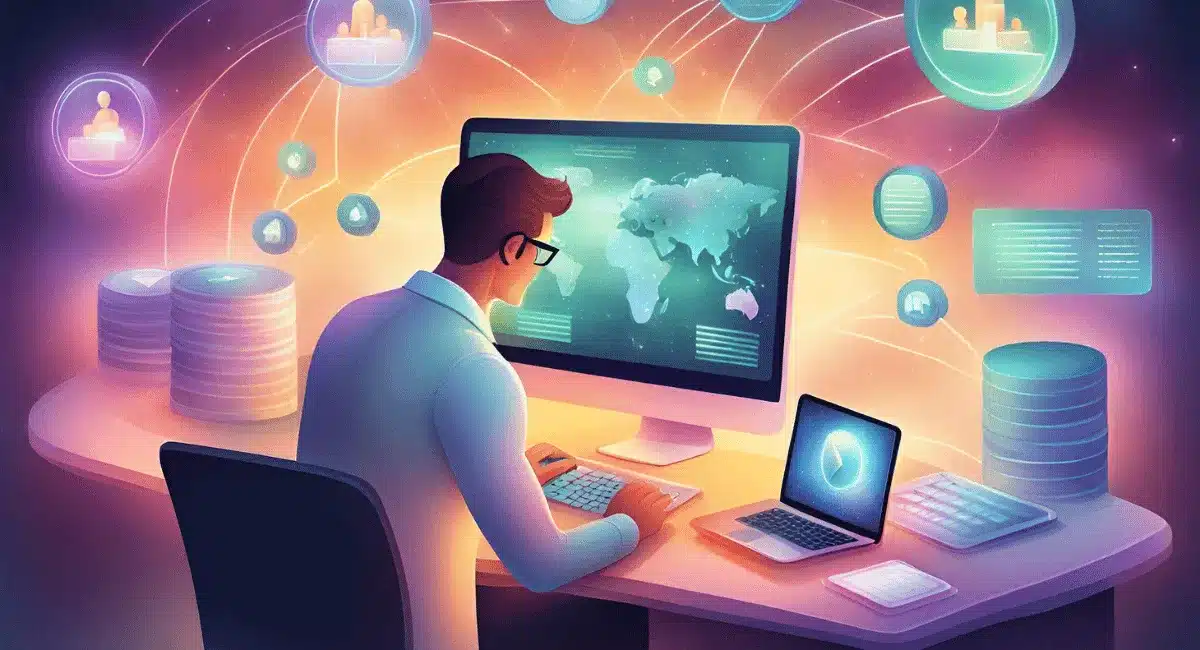
While there are various ERP benefits to well-deployed ERP systems, they may vary based on the deployment model chosen. Cloud ERP solutions offer distinct benefits compared to traditional on-premise installations.
Below are some of the benefits of ERP software:
- Cut Costs: Enterprise resource planning software can significantly reduce expenses, with studies showing a 22% drop in inventory levels and nearly 20% lower overall costs for manufacturers.
- Real-Time Insights: ERP means that it provides up-to-date data on sales, inventory, and finances, enabling fast, informed decisions that boost efficiency and productivity.
- Support Business Growth: ERP products helps businesses scale efficiently with streamlined processes and accurate data, allowing companies to seize new opportunities.
- Customizable to Your Needs: ERP systems can be tailored to fit your specific business workflows, ensuring maximum efficiency and adaptability.
If you want to know more about the benefits of ERP systems in detail, you can click on the article we provide.
Common ERP Modules
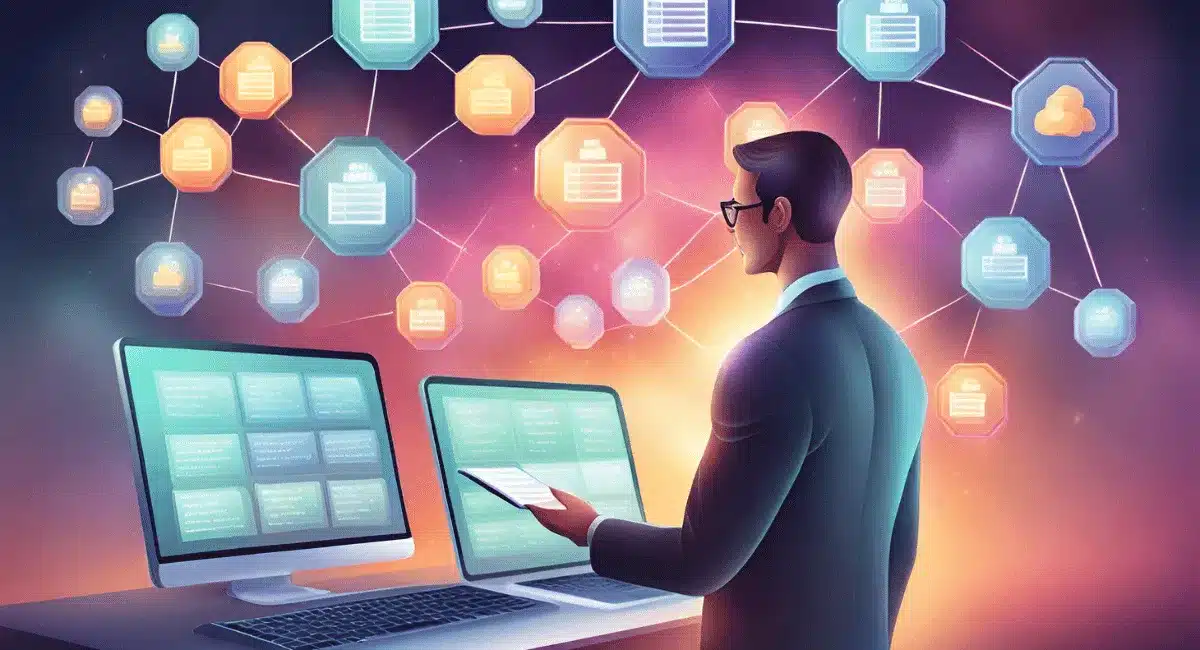
An ERP software consists of different modules. ERP modules are designed for specific business functions to help employees do their jobs. Every module plugs into the ERP database, so the system provides a single source of accurate data, even when the company adds new modules.
- The finance and accounting module keeps track of money coming in and going out. Furthermore, it manages financial records and automates billing and payments. For example, ERP tools can automatically send invoices to customers and track when they pay.
- The procurement module automates buying processes and manages vendor lists. In addition, it creates and sends purchase orders, monitors order status, and updates inventory when goods arrive. The real-life application is that it can automatically reorder office supplies when they run low.
- The manufacturing module includes a material requirements planning (MRP) system and Robotic Process Automation (RPA) to plan production, ensure materials and machinery are ready, track progress, and provide real-time insights to keep operations aligned with demand.
- The inventory management module tracks stock levels, inventory movement, and locations. Moreover, it connects to procurement for a full view of inventory and helps control costs. It analyzes sales patterns to optimize stock levels and avoid shortages. For instance, it can alert you when stock is low and suggest reordering.
- The supply chain management module oversees the movement of logistics from suppliers to customers, including returns. Meanwhile, it works with procurement, inventory, manufacturing, and warehouse management for comprehensive supply chain tracking. For example, it can track a shipment from the supplier to your warehouse and then to the customer.
- The CRM (Customer Relationship Management) module stores customer data, improves customer service and tracks sales leads and opportunities. Additionally, this sales module manages communications, promotions, and cross-selling, with features for segmentation, contact management, and report generation. For instance, it can send personalized emails to customers based on their purchase history.
- The HRM (Human Resource Management) module centralizes employee information, tracking hours, PTO, benefits, and performance reviews. As a result, it eliminates data duplication and ensures accurate, centralized records, acting as a CRM for employees with workforce management features. For example, it can track employee attendance and manage leave requests.
- The POS module automates sales, tracks transactions, and updates inventory in real time. Furthermore, Point of Sale (POS) integrates sales data with other business activities, making it essential for businesses that sell directly to customers, improving purchase tracking and payment processing. For instance, it can process a sale at a retail store and update the inventory immediately.
- The asset management module tracks physical and digital assets from acquisition to disposal. Additionally, it schedules maintenance, manages depreciation, and ensures compliance. It helps reduce costs, extend asset life, and optimize asset use through accurate record-keeping. For example, it can schedule regular maintenance for company vehicles and track their depreciation.
If you want to know more about the ERP modules, you can read our article and discover the best erp software for your business.
ERP Deployment Models
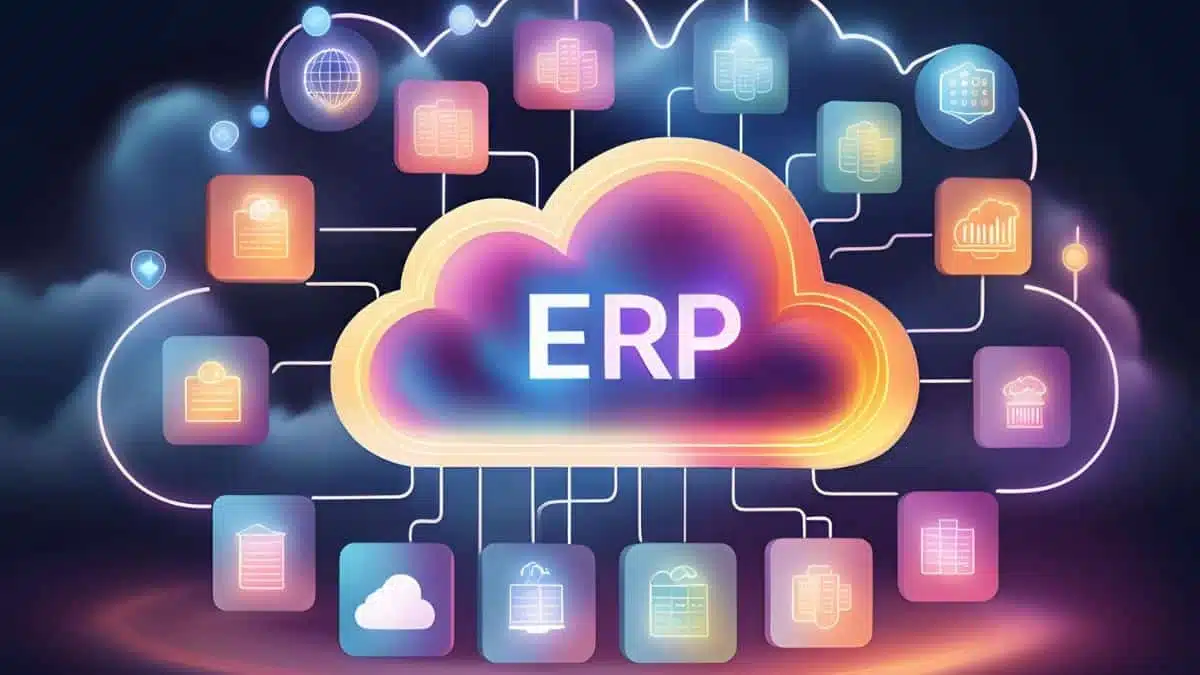
There are various types of ERP systems available to cater to different needs and types of deployment options. Understanding the different options can help businesses choose the right ERP system that aligns with their requirements and goals.
Below are ERP deployment models that companies can use:
1. On-premise ERP
On-premise ERP means the software is installed directly on your company’s servers and infrastructure. This gives you complete control over your system and data, but it also comes with high erp cost for setup and maintenance.
It’s a good option for industries like manufacturing, healthcare, and government where complex operations, strict data security, and regulatory compliance are critical.
On-premise ERP mean to used to be the go-to choice for many years, but it’s losing ground fast. Many companies are now moving to cloud-based systems, which means they need to plan their upgrades carefully and pick the right option for a smooth switch.
2. Cloud ERP
Cloud ERP is hosted online and accessed through the internet, so there’s no need for heavy on-site infrastructure. It’s flexible, scalable, and cost-effective. Plus, you can access it anytime, anywhere, making it ideal for industries like retail, tech startups, and professional services, where flexibility and remote access are essential.
It comes in two versions:
- Hosted Cloud Solution: A company buys a license and runs it on third-party remote servers, with data stored in a private cloud (single tenant). This setup offers more control and customization but requires more effort from the business. It’s a balance between on-premise and true cloud options.
- True Cloud Solution: Companies pay for access to servers and software fully managed by the vendor (multi-tenant). SaaS ERP is a common version, with the provider handling updates, making it more affordable and easy to manage.
3. Hybrid ERP
Hybrid ERP, also known as two-tier ERP is a combination of both cloud ERP and on-premise ERP. Businesses can leverage the benefits of both deployment models with this approach.
It lets you keep sensitive data on-site while using the cloud for other functions, giving you the best of both worlds.
This is great for industries like finance, telecommunications, and large enterprises that need a high level of customization and must meet strict compliance requirements.
4. Two-Tier ERP
Two Tier ERP is a strategy where a company uses two ERP systems: a primary system (Tier 1) at the corporate level for global processes like compliance and financial reporting, and a secondary system (Tier 2) at regional or departmental levels for localized operations.
This approach combines centralized oversight with flexibility for specific needs, making it ideal for large or multinational organizations.
Signs That Your Company Needs an ERP System

Recognizing signs that indicate your business could benefit from an ERP system is crucial for operational efficiency and growth. Inefficient manual processes can hinder productivity and lead to errors. Here, we outline key indicators that suggest it may be time to consider implementing an ERP solution:
- Lack of Data Visibility and Accuracy: When your business struggles to track data or see the overall picture in real time, ERP software Philippines can be the solution. It centralizes all your data, ensuring it is always up-to-date and accurate.
- Inefficient and Fragmented Processes: If you often perform manual tasks and use different software for various functions, enterprise resource planning can streamline operations. This reduces errors and saves time.
- Difficulty in Meeting Customer Demands: If keeping up with customer demands is challenging, an ERP system can help manage orders and enhance customer satisfaction.
- Insufficient Reporting and Analytics: When your current systems lack the necessary reports and insights, ERP software can provide detailed analytics for better decision-making.
- Limited Scalability and Growth: As your business expands, existing systems may become inadequate. An ERP system can scale alongside your business, accommodating increased transactions and users.
- Inadequate Regulatory Compliance: If meeting legal requirements is a struggle, ERP software can ensure compliance. It enforces standardized processes and maintains detailed records to help you avoid legal issues.
If you are interested in learning more about the best ERP system for your business, click on the banner below to view HashMicro ERP’s pricing scheme and learn how it can be tailored to your business’s specific needs.

ERP Implementation Challenges

Implementing an ERP system can be tricky, and a few problems can arise. It’s important to know what these are and how to deal with them to ensure everything goes smoothly. In this section, we will discuss some common ERP implementation challenges and strategies for overcoming them.
1. Budget Constraints
One major issue is not having enough funds. It’s important to budget carefully for software, hardware upgrades, and expert advice to avoid any surprises. Without a realistic budget, costs can quickly spiral out of control, delaying the project.
2. Employee Training
Getting everyone up to speed on the new system can be tough. Investing in quality training and support helps employees get comfortable using the ERP. Continuous support and refresher training can also ensure long-term success with the system.
3. Data Conversion
Transferring data from old systems can be tricky and time-consuming. A well-planned data migration process ensures accuracy and consistency throughout the switch. Testing the data transfer process multiple times reduces the risk of errors.
4. Employee Resistance
Employees may resist new processes, leading to the implementation being slowed down. Clear communication, solid training, and involving staff in decisions can help ease the transition. Creating a positive mindset around the change is key to getting everyone on board.
5. IT Resource Limitations
Having skilled IT support is essential for managing the technical complexities of ERP implementation. However, a lack of sufficient IT resources can create significant hurdles, from troubleshooting issues to maintaining the system. It’s important to ensure that you have enough dedicated IT staff available, along with backup plans for unexpected problems, to avoid delays and disruptions during the implementation process.
How to Choose an ERP System for Your Business
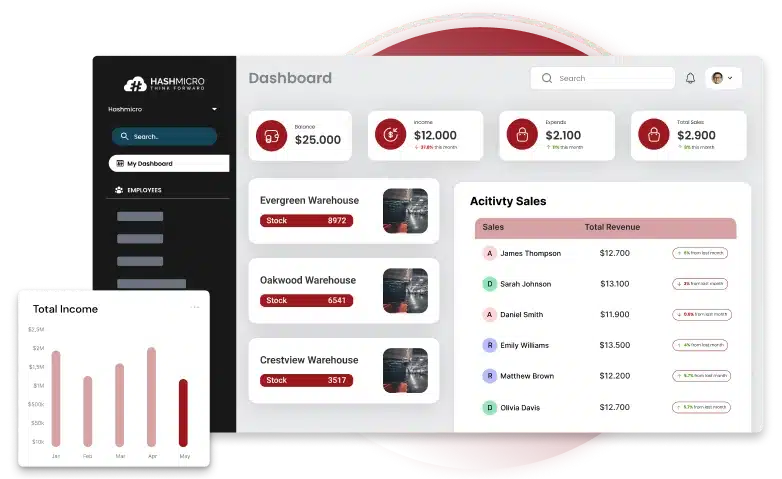
Digital transformation is speeding up, and businesses are turning to cloud-based ERP systems for better access, lower costs, and easier integration. Companies also want ERP software that is flexible, industry-specific, and personalized to meet user needs.
To add to the complexity factor, the companies need to be critical when choosing an ERP solution Philippines, as it will be their important platform to store and manage company data for many years. Thus, they must pay attention to these considerations before choosing an ERP system:
- Identify business needs: Assess your business priorities to choose an ERP software that aligns with your requirements.
- Evaluate ERP vendors: ERP vendor selection is important, choose one with proven industry experience and successful ERP implementations.
- Consider scalable and customizable systems: Choose an ERP system that can be customized and scaled to meet your evolving business needs.
- Do a cost analysis: Perform a TCO analysis to ensure ERP software financial sustainability.
HashMicro offers the best ERP system in the Philippines, offering integrated software that simplifies complex business processes. With a proven track record of successful implementations, HashMicro delivers industry-specific solutions tailored to your business needs, making management easier and more efficient.
This system is also packed with top-tier features designed to meet the needs of any business, from manufacturing to retail. Here’s why HashMicro stands out:
- Flexible Hosting Methods: Whether your business prefers the security of on-premise systems or the scalability of cloud solutions, HashMicro’s ERP gives you the flexibility to choose what works best for you.
- AI-Generated Report & Explainer: Let HashMicro’s advanced AI automatically generate insightful reports and suggest data-driven actions, keeping your business ahead in analytics and strategy.
- WhatsApp Integration: Seamlessly communicate with clients and team members directly from HashMicro’s ERP, leveraging WhatsApp for real-time, secure business interactions.
- Dashboard Ninja: HashMicro’s customizable dashboards provide the interactive, visually engaging tools you need to make quick, informed decisions with ease.
- Mobile App: Access your ERP system anytime, anywhere with HashMicro’s mobile app, ensuring productivity and flexibility for today’s mobile workforce.
- Custom BI: Tailor HashMicro’s business intelligence tools to your specific needs, empowering your team to create meaningful reports and make smarter business decisions.
- Access-Level: Ensure data security by managing employee access through HashMicro’s role-based controls, allowing only authorized personnel to handle sensitive information.
With HashMicro’s robust features, your business will be equipped with the tools needed to succeed in a competitive market.
Aside from that, you should also know which ERP vendors are trustworthy and can fulfill your needs. To get the big picture, you can read our recommendation for ERP software in the Philippines.
Case Study: Unlocking Business Potential Through ERP Implementation
In this section, we will delve into a captivating case study showcasing how a business effectively implements an ERP system. The story provides clear examples of how a company uses ERP solutions to streamline operations and achieve significant success.
Jollibee: maintaining excellent service with ERP

Jollibee Foods Corporation (Jollibee Group), a major food company with 17 brands and over 5,800 outlets in 34 countries, has chosen a cloud ERP system to manage its resources. The company switched its IT setup from data centers in different locations to ERP software.
The move, led by Jollibee Group’s global headquarters in the Philippines, involves closing on-site data centers and transferring important work in less than 24 hours. This has helped save money, simplify IT management, and offer new services.
This change makes Jollibee more flexible, especially in responding to changes in how people order food, like the increase in delivery orders during the pandemic.
During the COVID-19 pandemic, Jollibee Group had trouble predicting how much food people would order because of social distancing and lockdowns. To fix this, the company’s operations in the Philippines used advanced features of the ERP system. They watched sales closely and made accurate reports using a strong database and analytics.
Jollibee’s new ERP software also helped create operational dashboards that give instant insights into restaurant operations. They can monitor food inventory, make more food when orders go up, and more efficiently send food to their restaurants all over the country.
ERP has been really helpful in changing how Jollibee works, letting them quickly change how they do things as eating habits change. Advanced features, like analytics, are very important for Jollibee to come up with new ideas in all parts of its business, from how it gets food to customers to how it runs its restaurants and drive-thru lanes, to make sure customers have a great experience.
Get started with HashMicro ERP
Picking the best ERP software is key to keeping your business running smoothly. A trusted vendor brings the experience and expertise needed for seamless system integration. In short, huwag mahihiyang magtanong — make sure you choose the best partner for your business in the Philippines.
HashMicro ERP System stands out as the top choice in the Philippines. With comprehensive software designed to simplify complex processes, HashMicro offers tailored, industry-specific solutions. Their proven track record guarantees seamless integration for any business.
Get in touch with our customer service team today and enjoy a free demo. Explore the system, understand its features, and see how it can benefit your business. Our experts are ready to answer your questions and help you discover the value HashMicro can bring to your operations. Don’t miss out on this opportunity!

FAQ About ERP System
-
What is ERP?
ERP, or enterprise resource planning, refers to a software solution that integrates various tools and processes essential for managing a successful business. This system encompasses areas such as human resources, production, finance, accounting, supply chain management, and several other functions.
-
How does ERP differ from financials?
While often linked, ERP and Financials aren’t the same. Financials are a part of ERP, handling finance-specific tasks like accounting and payments. ERP, in contrast, covers a wider scope, managing processes such as procurement, supply chain, manufacturing, and HR. ERP can also integrate with CRM and incorporate technologies like IoT and AI, requiring collaborative management from multiple executives.
-
What are some of ERP examples?
Examples of ERP software include popular systems like HashMicro ERP, SAP, Oracle, and Microsoft Dynamics. These platforms help businesses manage and automate processes such as finance, HR, and supply chain to improve efficiency and streamline operations.
-
What are the three main types of ERP?
There are three primary types of ERP systems, each with different deployment models. The most common ERP types are cloud ERP, on-premise ERP, and hybrid ERP.
-
How long does it take to implement an ERP system?
ERP implementation time varies based on the complexity and size of the business. It can take anywhere from a few months to over a year. Smaller companies with simpler needs may finish sooner, while larger organizations with custom requirements may take longer.
-
How does ERP support a business growth?
ERP systems help businesses scale by streamlining processes, improving data accuracy, and enabling better decision-making. As a business grows, ERP can adjust to handle increased transactions and new business functions.



